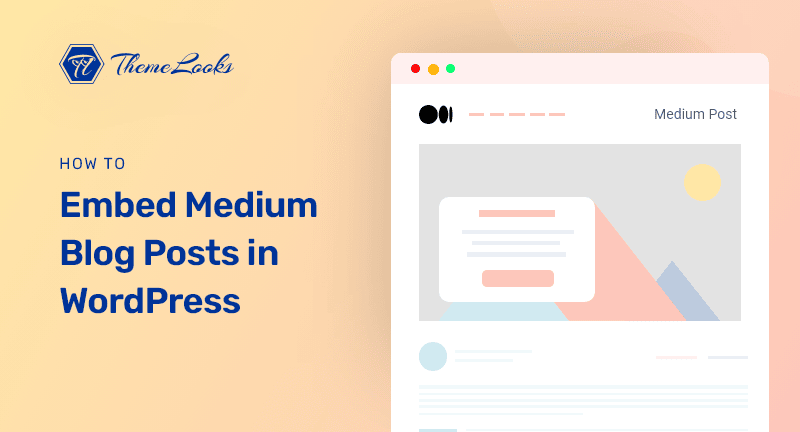
Are you interested in embedding Medium blog posts in WordPress?
You can easily publish articles online using Medium, a popular blogging platform. Your WordPress site can, however, display those posts as well.
Let’s take a look at how you can easily embed Medium blog posts in WordPress using this article.
Table of Contents
You can easily publish articles on the internet using Medium, which is a popular blogging platform.
However, using Medium does not offer the same flexibility as using a WordPress site.
It may be more convenient to integrate your Medium articles with WordPress.
Using WordPress to make a website is more flexible; you can monetize your content however you wish.
Typically, WordPress embeds content from third-party websites, including YouTube, Twitter, and others, using the oEmbed format.
The Medium format is not supported by WordPress, making Medium embedding difficult. In the past, users could display Medium articles on WordPress blogs using plugins, but these services have either stopped working or are no longer maintained.
As a result, only the RSS block or widget can be used to embed Medium articles in WordPress.
The first thing you need to do is find the RSS feed for your Medium publication. A URL like this usually refers to it:
https://medium.com/feed/your-publiction-name
You can access your Medium RSS feed at this location if you use a custom domain:
https://your-domain.com/feed
Your next step is to add the RSS block to the content area of the WordPress post or page where you wish to embed Medium posts.
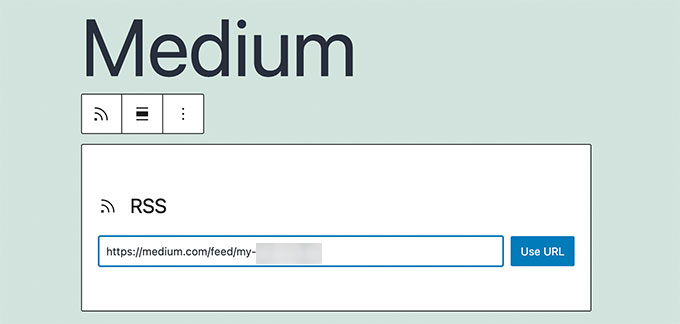
Then, enter the URL for your Medium RSS feed in the block settings.
Once that’s done, WordPress will display the most recent Medium articles. It is possible to select to show excerpts, featured images, authors, and dates in the block settings.
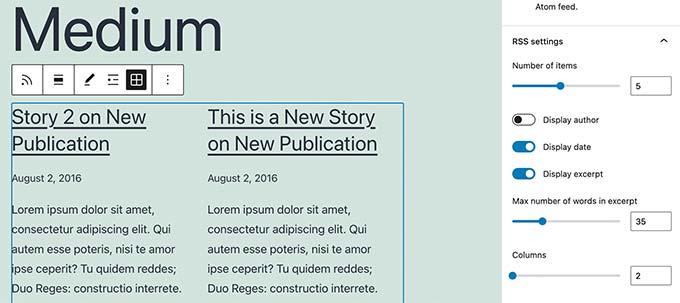
This method has the disadvantage that it cannot embed a Medium individual article. This block will only display Medium posts that have been published within the last few days.
Consider moving your Medium articles to WordPress if you’d like more flexibility and freedom.
WordPress offers the flexibility and features you need to take advantage of while migrating your Medium articles.
Many website builders are on the market, but WordPress is the most popular. The platform powers over 43% of all websites on the internet.
We have an article explaining why WordPress is the ideal platform for creating your website.
The first step is to set up a WordPress website if you haven’t already.
WordPress comes in two forms: WordPress.com, a blogging platform, and WordPress.org. WordPress.org is also known as self-hosting WordPress. For more details, please see our
article about the differences between WordPress.com and WordPress.org.
We recommend using self-hosted WordPress because it gives you full flexibility over how you build your website.
Get started by getting a domain name and signing up for WordPress hosting. We recommend going with Bluehost to get a domain name and hosting account.
You will need to convert your Medium articles into a format that WordPress supports before you can import them into WordPress.
By default, Medium does not provide any tools for this. It does, however, allow you to export content in formats that Medium does not support.
Simply sign in to Medium and click on your profile picture. Click the Settings link from here.
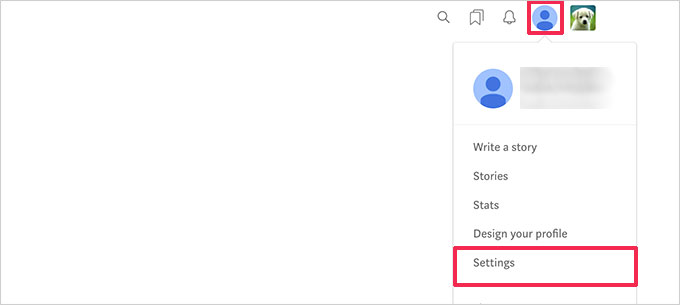
This will lead you to the settings page, where you must scroll down to the area under ‘Download Your Information.’
To export your Medium data, click the ‘Download zip’ option.
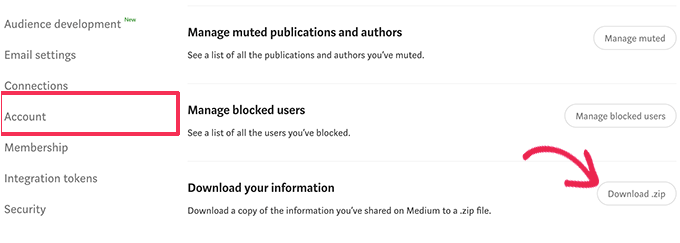
On the following page, click the export option. Medium will then arrange your download and provide you a link.
Once you’ve downloaded the export file, go to the Medium to WordPress Importer tool. It’s a free online tool for converting your media export file to a WordPress-compatible format.
To begin, enter your Medium profile URL, name, and email address.
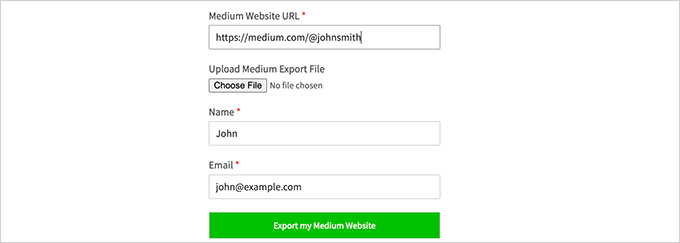
If your Medium blog uses a custom domain, you must provide your custom domain URL.
If you’re using your Medium profile URL, you’ll be prompted to submit the Medium export file you downloaded earlier.
To proceed, click the ‘Export My Medium Website’ option.
The Medium will now prepare your export file to WordPress Importer. When done, it will display a success message and a download button for your WordPress-ready Medium export file.
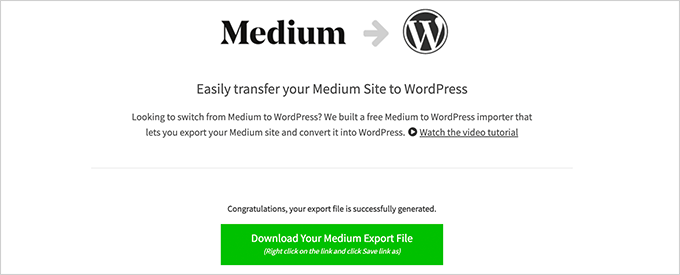
You may now save the file to your PC.
After that, navigate to your WordPress website’s Tools > Import page.
You will discover a list of importers for various platforms. Scroll down to WordPress and then click the ‘Install Now’ button.
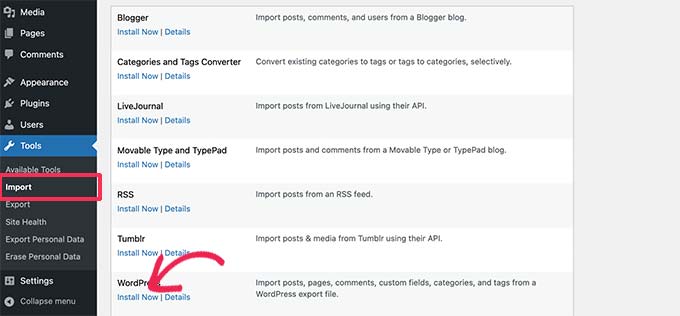
WordPress will now go and get the importer plugin.
When you’re done, click ‘Run Importer’ to start it.

To proceed, click the ‘Upload file and import’ option on the following screen.

The WordPress importer will now upload and evaluate your Medium export file.
The following screen will prompt you to designate authors.
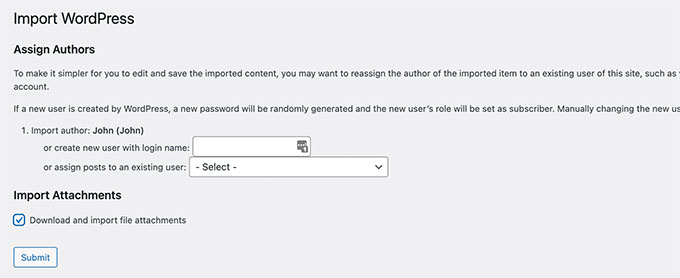
You can import the author from your Medium page, create a new author, or assign all material to an existing WordPress account.
Remember to tick the box next to ‘Download and import file attachments’. It will try to import photographs from your Medium site into your WordPress media library.
You may now run the importer by clicking the Submit button. When you finish, you will see a success message.

Congrats, you have successfully imported Medium content into WordPress!
You may now go to your WordPress admin area’s posts page to double-check that all of your content is there.
The WordPress importer attempts to import images from your Medium posts into your WordPress media library. However, it may fail to owe to how Medium presents your posts’ images.
Simply navigate to the Media > Library tab to see all of the photographs that have been successfully imported.
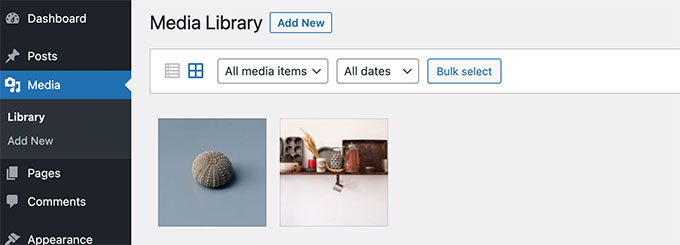
In any case, if a few or all the images failed to import, you will need to re-import them accordingly.
You must first install and activate the Auto Upload Images plugin. For additional information, visit our step-by-step guide to installing a WordPress plugin.
After activation, you must update the posts that contain the external photos. This update instructs the plugin to get and save external photos in the article.
You may also bulk update all articles at once to import all photos rapidly. See our step-by-step tutorial on how to import external images in WordPress for more information.
You cannot set up redirects if your Medium publication has a medium.com URL.
However, if you used a custom domain for your Medium publication, you may use WordPress to set up custom redirects.
To begin, collect all of the URLs for your Medium articles and save them in a text file. Following that, you must begin creating redirects for all of your articles.
Having identical articles on two separate websites now has an impact on their search engine optimization (SEO), since Google considers them duplicate content. As a result, your new WordPress site may not receive any search engine visitors.
Simply deactivate your Medium account to avoid this. Deactivating your account maintains all of your content on Medium, but it is no longer publicly accessible.
Simply click on your Medium account’s Profile button and then pick Settings.
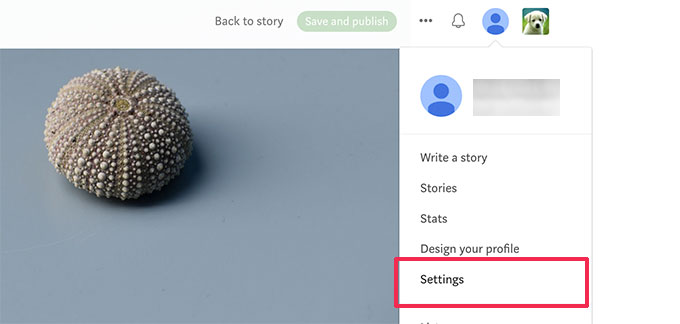
Once you’re on the Settings page, scroll down your cursor and find the Security section.
Once you reach there, you’ll get Deactivate account section. Now, click on Deactivate account link at the bottom of this section.
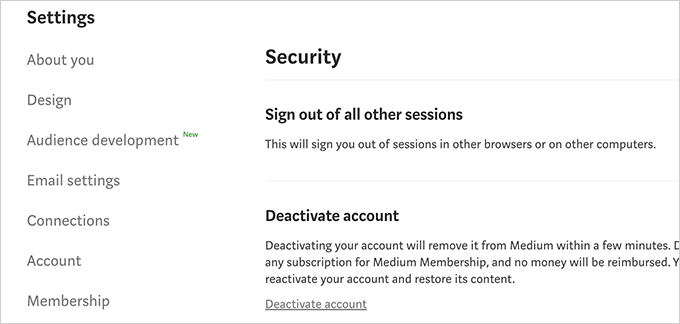
We hope this article helped you learn how to embed medium blog posts in WordPress. You may also want to see our guide on 13+ signs that your WordPress site is hacked and how you can fix them, and our expert picks of the best responsive WordPress themes you can count on in 2022.
If you like this post, be with ThemeLooks and subscribe to our WordPress video tutorials on YouTube. We may also be found on Twitter, LinkedIn, and Facebook.